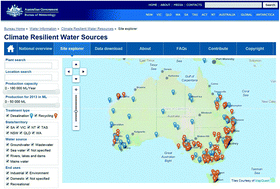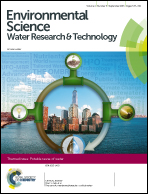Water recycling in Australia – during and after the drought
Abstract
Australia is a dry continent. Its governments initiated a visionary process of water reform in 1994, when water resource management and water supply services began to be progressively separated. The subsequent Intergovernmental Agreement on the National Water Initiative (2004) separated entitlements for water from ownership of land, allowing water to be traded. The agreement provided a nationwide framework for management of water for the environment, agriculture and urban use, including water recycling. Also included was a commitment to full cost recovery. From about 2000, Australia had entered a prolonged period of what came to be known as the “millennium drought”. This encouraged the urgent adoption of alternative water sources and the development of recycled potable water guidelines. However, rains returned to eastern Australia from 2008 and in January 2011, much of it was flooded. After their proving phases were completed, newly-built eastern states desalination plants were put on standby and the Brisbane Advanced Water Treatment Plants were closed without ever having been used for their principal purpose of potable supply. By contrast, Western Australia has remained dry, thought to be early evidence of global warming, with its desalination plants supporting Perth's base water supply. An indirect potable water recycling plant using managed aquifer recharge is being built with wide community acceptance. Nationally, following much of the major water infrastructural investment now seeing little use, attention has turned to economic regulation, the evaluation of those capital investments and their impact on prices and charges to water consumers. It has been argued that insufficient attention was paid earlier to the continuing role, economics, on-going technological resilience and in some cases public acceptance of the water recycling and desalination after the drought abated. After the end of the drought in eastern Australia, national policy priorities have turned elsewhere. Intergovernmental and statutory institutional structures have been abolished. Water policy complacency is evident and reform impetus is at risk of being lost. Water research funds are reducing. Australia must ensure that a long term policy reform commitment is maintained while dealing with immediate, short term issues. Policy-makers and the community must ensure that recycled water and desalination are seen as valuable resources within the framework of the entire hydrological cycle where economically viable – all water is ultimately recycled.

- This article is part of the themed collection: Potable Reuse of Water


 Please wait while we load your content...
Please wait while we load your content...